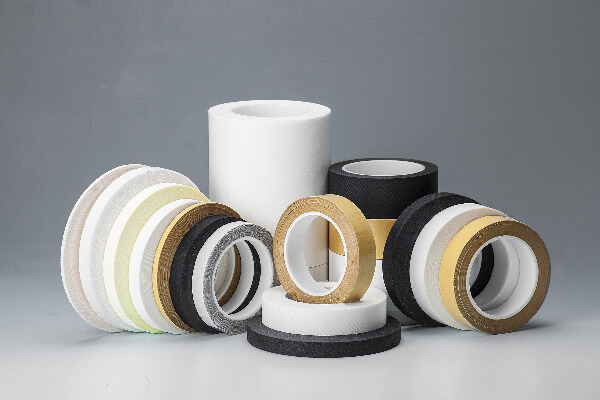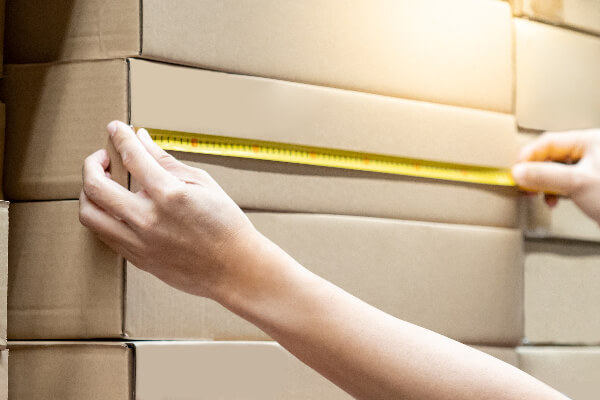Bubble wrap is a commonly used material in packaging. It consists of two layers of thin film with a layer of air bubbles sandwiched in between. The structure of bubble wrap provides effective cushioning, helping to mitigate the impact on products when wrapped with it. In this article, you will find the answers on how to properly use bubble wrap.
When to Use Bubble Wrap
Bubble wrap is primarily used in scenarios involving the transportation and storage of products. Here are common situations where bubble wrap is frequently employed:
Transporting Fragile Items
When transporting fragile items, bubble wrap serves as an ideal protective material. By thoroughly wrapping products with bubble wrap, it provides excellent protection during transit, reducing impacts and minimizing the risk of product breakage.
Storing Fragile Items
When storing fragile items, wrapping them with bubble wrap prevents the accumulation of dust and shields items from scratches that may occur during storage.
Protecting Temperature-Sensitive Items
The excellent thermal insulation of bubble wrap can safeguard temperature-sensitive items, such as electronics or pharmaceuticals, from temperature fluctuations.

Choose the Right Type of Bubble Wrap
Before using bubble wrap, it’s essential to know that it comes in various types, and selecting the right one for your packaging needs is crucial. Let’s categorize bubble wrap based on the following standards and detail the characteristics and use cases for each category:
Standard Bubble Wrap
Standard bubble wrap features evenly arranged bubbles and is suitable for a wide range of scenarios. It is the most common type of bubble wrap.
Low-Grade Bubble Wraps
Low-grade bubble wraps are more affordable due to larger bubbles and thinner material, resulting in lower production costs. While they offer less protection compared to standard bubble wrap, they are suitable for packaging sturdy items that have a strong resistance to bumps and impacts.
High-Grade Bubble Wraps
High-grade bubble wraps have smaller and tightly arranged bubbles, providing enhanced protection. They are suitable for packaging fragile items like glass and ceramics.
Anti-static Bubble Wrap
Anti-static bubble wrap prevents the accumulation of static electricity and is mainly used for packaging electronic components and other items sensitive to static electricity.
Bubble Wrap Bags
Bubble wrap bags come pre-made with bubble wrap, reducing the time required for packaging. However, these bags are typically not very large and are suitable for small items.
Recycled Bubble Wrap
Recycled bubble wrap is made from recycled materials, contributing to environmental conservation by reducing the consumption of new raw materials.
Temperature-Controlled Bubble Wraps
Temperature-controlled bubble wraps provide better insulation than regular bubble wrap.
FDA-Grade Bubble Wraps
FDA-grade bubble wraps are made from materials compliant with FDA regulations, making them suitable for direct contact with food. They are often used in food distribution and packaging.
Choose the Right Bubble Size for Bubble Wrap

Bubble wrap specifications primarily differ based on bubble size. You can select the appropriate bubble wrap size according to the table below:
| Bubble Size | Detail | Recommend Usage |
| 1/16″ | Thin and suitable for transporting lighter items. | Suitable for protecting small items with fragile surfaces, such as glassware, ceramics, small electronic devices, etc. |
| 1/8″ | Medium thickness, provides stronger protection. | Suitable for transporting medium-weight items, such as cameras, lighting fixtures, etc. |
| 3/16″ | Thicker in thickness, it is the most commonly used bubble wrap. | It has a wide range of applications and can be used for both large and small items. |
| 5/16″ | Thicker in thickness, providing stronger protection. | Suitable for providing protection during transportation for heavy and fragile items, such as large furniture components, artwork, and more. |
| 1/2″ | It is the thickest bubble wrap, providing the maximum level of protection for items. | Suitable for protecting extremely fragile or heavy items, such as large electronic devices, furniture, and more. |
How Do You Know How Much Bubble Wrap You Need?
Before officially wrapping items with bubble wrap, you need to know how much bubble wrap you require. Follow the steps below to quickly calculate the necessary amount:
Measure the Item
Measure the dimensions of the item to be wrapped (including length, width, and height).
Calculate Surface Area
Based on the measured dimensions, calculate the surface area of each side of the item that needs protection. Add up these areas to determine the total surface area of the item. If the item is irregularly shaped, you may need to estimate the surface area.
Determine the Number of Layers
Consider how much protection you want to provide for the item. Fragile items may require multiple layers. Additionally, factor in the cost of shipping, as the volume of the item influences shipping costs. If the item is too bulky, it could lead to higher transportation expenses. Consider both aspects to decide how many layers you need.
Calculate the Required Bubble Wrap
Multiply the total surface area of the item by the number of layers of bubble wrap you intend to use. This calculation will give you the dimensions of the bubble wrap you need. It’s advisable to cut the bubble wrap to slightly larger dimensions than calculated when actually using it.
Which Side of Bubble Wrap Should Touch the Object?
When using bubble wrap, it’s common practice to have the side with the bubbles (the raised side) in direct contact with the object. This allows the bubbles to snugly conform to the object, providing a tighter fit. The relatively smooth side faces outward, preventing the bubble wrap from catching on the surfaces of other objects. Wrapping items in this manner maximizes the cushioning effect of bubble wrap, offering ample protection to the object during transportation and storage.
Wrapping Your Items Step by Step

Choose the Right Bubble Wrap
Select the appropriate type of bubble wrap based on the items you want to protect, ensuring optimal safeguarding.
Cut the Bubble Wrap
Cut a piece of bubble wrap large enough according to the method mentioned earlier for calculating the required amount of bubble wrap.
Place the Object in the Center of the Bubble Wrap
Position the item to be wrapped in the center of the bubble wrap.
Fold and Secure
Fold the sides of the bubble wrap over the item, ensuring complete coverage. If there is excess bubble wrap, fold it over the item for additional protection.
Secure with Tape
Use packing tape to secure the bubble wrap, ensuring the tape adheres firmly to the surface of the bubble wrap to keep the wrapping stable.
Provide Extra Protection for Fragile Parts
For particularly fragile parts, consider adding additional layers of bubble wrap or other padding to ensure the item receives extra secure protection.
FAQ
How Should I Dispose of Used Bubble Wrap?
Place it in Designated Non-Recyclable Bins
General bubble wrap falls under non-recyclable waste. When discarding it, put it in the designated non-recyclable waste bin for proper sorting and disposal, reducing its impact on the environment.
Reusability
If the bubble wrap is not severely damaged and still usable, consider storing it for future reuse. This practice minimizes resource wastage and contributes to environmental conservation.
Is Bubble Wrap Recyclable?
Bubble wrap is not recyclable. Please refer to the answer to the previous question for specific disposal methods.
Conclusion
We hope this article has addressed any questions you had about using bubble wrap. If you need to order bubble wrap, feel free to reach out to us through our website. Our dedicated sales team will promptly assist you.
More Resources:
How to Use Bubble Wrap – Source: wikihow
What is the correct way to use bubble wrap, bubbles in or out? And why – Source:Quora



